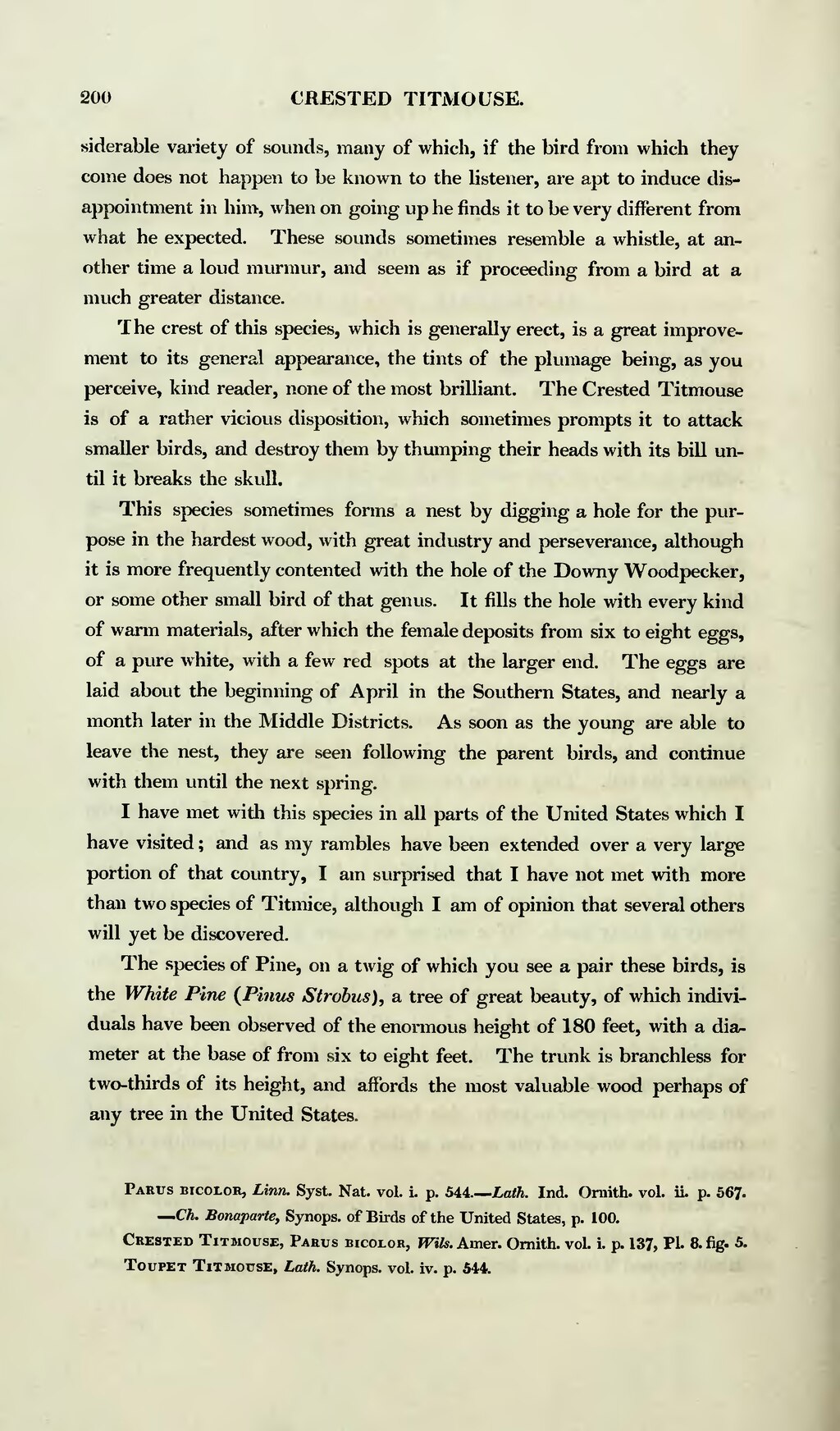siderable variety of sounds, many of which, if the bird from which they come does not happen to be known to the listener, are apt to induce disappointment in him, when on going up he finds it to be very different from what he expected. These sounds sometimes resemble a whistle, at another time a loud murmur, and seem as if proceeding from a bird at a much greater distance.
The crest of this species, which is generally erect, is a great improvement to its general appearance, the tints of the plumage being, as you perceive, kind reader, none of the most brilliant. The Crested Titmouse is of a rather vicious disposition, which sometimes prompts it to attack smaller birds, and destroy them by thumping their heads with its bill until it breaks the skull.
This species sometimes forms a nest by digging a hole for the purpose in the hardest wood, with great industry and perseverance, although it is more frequently contented with the hole of the Downy Woodpecker, or some other small bird of that genus. It fills the hole with every kind of warm materials, after which the female deposits from six to eight eggs, of a pure white, with a few red spots at the larger end. The eggs are laid about the beginning of April in the Southern States, and nearly a month later in the Middle Districts. As soon as the young are able to leave the nest, they are seen following the parent birds, and continue with them until the next spring.
I have met with this species in all parts of the United States which I have visited; and as my rambles have been extended over a very large portion of that country, I am surprised that I have not met with more than two species of Titmice, although I am of opinion that several others will yet be discovered.
The species of Pine, on a twig of which you see a pair these birds, is the White Pine (Pinus Strobus), a tree of great beauty, of which individuals have been observed of the enormous height of 180 feet, with a diameter at the base of from six to eight feet. The trunk is branchless for two-thirds of its height, and affords the most valuable wood perhaps of any tree in the United States.
Crested Titmouse, Parus bicolor, Wils. Amer. Ornith. vol. i. p. 137, Pl. 8. fig. 5.
Toupet Titmouse, Lath. Synops. vol. iv. p. 544.
